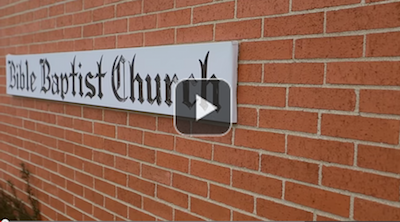MARCH 26, 2017
JESUS’ FIRST MIRACLE
INTRODUCTION:
1. Jesus, having been declared by John the Baptist to be the Messiah (Ch. 1:19-37), manifested Himself as such to His first disciples. (Ch. 1:38-51)
a) He manifested Himself to Andrew and John through personal interview, the effect of which also extended to Peter and James through personal witness. (Ch. 1:34-42)
b) He manifested Himself to Philip by a personal and effectual call. (Verse 43) Though Andrew and Peter, being of the same city, had, no doubt, talked to him about Jesus, it was Christ’s irresistible call that persuaded him, just as would later be the case with Matthew. (Matt. 9:9)
c) He would manifest Himself to Nathanael and indeed to the whole group by revelations which revealed miraculous knowledge. (Ch. 1:47-51) In this as well as the aforementioned manifestations, He established His intimate relationship to God, i.e. His own personal deity.
2. Jesus will now display the glory of His person before their eyes in a first act of omnipotence. He will perform His first miracle.
a) This miracle, embracing the fact of an entirely new order, was a validation of the faith of these first disciples, and caused it to rise to new heights. (Verse 11)
b) This miracle would mark the end of Jesus’ private life. It would be a royal farewell to His merely natural relation as the Son of Mary and Joseph.
3. Jesus’ first miracle took place in the family circle, and makes the connection between His private life and His public ministry, which is here initiated.
1. JOHN GIVES A CAREFUL AND DETAILED DESCRIPTION OF JESUS’ FIRST MIRACLE. (VERSES 1-9)
A. HE CAREFULLY DOCUMENTS THE TIME, PLACE, AND OCCASION OF THIS MIRACLE. (VSE. 1)
1. It was “the third day.” This would mean the third day since Jesus determined to leave Judea, and go forth into Galilee. (Ch. 1:43) It was a three day’s journey from where John was baptizing to Nazareth, which was very near to Cana.
a) This would be the second three day period, the first being the three days of John the Baptist’s witness recorded in the previous chapter.
b) Together they comprise a full week and answer to the last week of Jesus’ passion. What great and amazing things had happened in that first week.
2. The place was “Cana of Galilee,” which was just a short distance from Nazareth, where Jesus lived. We are not told if Jesus went first to Nazareth, or if he went directly to Cana.
3. The occasion was a wedding.
a) This was apparently a family wedding. Someone related to Jesus was getting married.
b) This would appear to be so from the fact that Jesus’ mother was there in a serving capacity, and Jesus was invited to come.
B. HE MAKES PARTICULAR MENTION OF SOME OF THE PERSONS THAT WERE THERE. (VS. 1b, 2)
1. The mother of Jesus was there. The Greek suggests that she was already there. “…the mother of Jesus was (being) there.” The fact that she was already there probably means that she was, as a family member, helping with the wedding in some way. It would appear that she was overseeing the serving of the meal and the wine.
2. Jesus and his disciples, having arrived later, were “called,” that is, they were extended a special courteous invitation.
a) Jesus, we would assume, was thereby invited. Whether He came by way of Nazareth first, to went directly to Cana, it would seem that when he left Judea intending to go back to Galilee, being in attendance at this wedding was part of His plan.
b) His disciples, however, were not on the list of invited guests, thus, they were included, courtesy of the family. At this time the number of disciples would have been six.
c) All of these considerations aside, Jesus’ attendance was for reasons of much greater import than simply honoring the marriage of a relative. As for His disciples, they may have been unexpected guests at this special event, but their being there was by his design and for a purpose that, at the time, was not known to any except Himself.
d) If His disciples’ taking part created a wine shortage, that too was by design, as we shall see.
C. HE CALLS ATTENTION TO A PROBLEM THAT WAS CREATED BY A SHORTAGE OF WINE. (VERSES 3-5)
1. It may be that the six additional guests occasioned the shortage of wine. (Verse 3a)
2. Mary, sensing responsibility moved to solve the problem. (Verse 3b)
a) Her closeness to the bride and groom perhaps was the reason she took responsibility.
b) Perhaps she, as before suggested, was helping by seeing to the matter of serving refreshments.
3. Mary’s expectation of Jesus was most natural, but out of place.
a) Think of what she knew about her Son; think of the things she had pondered in heart these many years.
b) She was doubtless aware of the reports of John the Baptist, plus the six disciples that accompanied Jesus knew who He was.
4. Jesus’ rebuke of her, though it may seem harsh, actually was not. Due to the divine purpose behind all of this, Jesus’ words to Mary were necessary and most informative.
a) The underlying purpose to be worked on this occasion was Jesus manifestation of Himself as He transitioned from private life to public ministry.
b) Mary, as Jesus’ mother, tried, perhaps unwittingly, to control the manner and means of His manifestation. Though well intentioned, she was nevertheless overstepping her bounds.
c) Jesus duly loved and respected His human mother, and would never have dishonored the one who had borne and loved and nurtured Him. But, His Messianic office was a matter between Him and His Father, not Joseph, (whom it was supposed was His father (Luke 3:23)) but His eternal Father. His entrance upon His Messianic work was determined from eternity. Only He would determine when His hour had come. (Vs. 4b)
d) In this matter, Jesus had nothing to do with Mary as her Son. “Woman, what have I to do with thee?” (Verse 4a)
(1) Notice He says, “Woman,” not “Mother.”
(2) This was no disparagement, yet it was, no doubt, as a sharp sword in her heart when her Son cut the apron strings. Of course, she would afterward feel a yet more painful piercing of that sword. (Luke 2:35)
e) Jesus resisted Mary’s plea, just as He had resisted Satan’s repeated challenges in the wilderness. Though this appeal came through His dear mother, the temptation was essentially the same, and the same malignant spirit was behind it.
f) Jesus would just moments later do the very thing that, when suggested by His mother, drew from Him a stern rebuke and refusal.
(1) Jesus’ miracles (of which this would be the first) always had a higher purpose than the temporal benefit, which in this case, was solving the problem of a shortage of wine.
(2) Jesus’ miracles were never self-serving. He could not be tempted by fleshly appeals, as Satan found out. (Matt. 4:5-7)
5. Mary received the correction and learned from it. She went on to act in faith. (Verse 5)
a) She acknowledged His Lordship. Even though she was His mother, He was her Lord. (See Matt. 22:41-45)
b) She acted not as His mother who was in charge of refreshments at a family wedding, but as His servant, who, in obedience to His Spirit, charged all to obey His voice.
c) She somehow realized that He was about to do something extraordinary, not according to her will, but according to the will of His Father.
D. HE CAREFULLY DOCUMENTS THE MIRACLE ITSELF. (VERSES 6-9)
1. Like other miracles in the Bible it worked with the natural order. (Verse 6)
a) He used natural water, natural water pots, and ordinary servants.
b) We find that this rule applies to miracles throughout Scripture. (See Exod. 15:24, 25; II Kings 4:40, 41)
2. It was supernatural, but involved natural means. (Verses 7-9)
a) The water pots of stone were there.
b) Water was used to fill the pots.
c) Servants were called upon to do the work.
d) The ruler of the feast was used to bear witness.
II. JOHN RECORDS THE EFFECT OF THE MIRACLE BOTH NATURAL AND SPIRITUAL. (VSES. 10, 11)
A. IT HAD A NATURAL EFFECT. (VERSE 10)
1. The ruler of the feast was profoundly impressed.
a) This man was the governor of the feast. He was the head of the servants.
b) He knew nothing of what Jesus had done. (Verse 9)
c) He attests the surpassing goodness of this wine.
d) So impressed was he that he desired to know why it was served last, which was not customary. “Thou hast kept the good wine until now.”
e) We may safely assume that all of the guests were affected the same.
B. IT HAD A PROFOUND SPIRITUAL EFFECT. (VERSE 11)
1. It was the “beginning” of Jesus’ miracles.
2. It occurred at “Cana of Galilee,” marking the end of Jesus’ private life, and the beginning of His Messianic ministry.
3. It “manifested forth Jesus’ glory.”
4. It established the faith of Jesus’ disciples.
a) They did not here begin to believe.
b) Their faith as newly called disciples was here confirmed.


